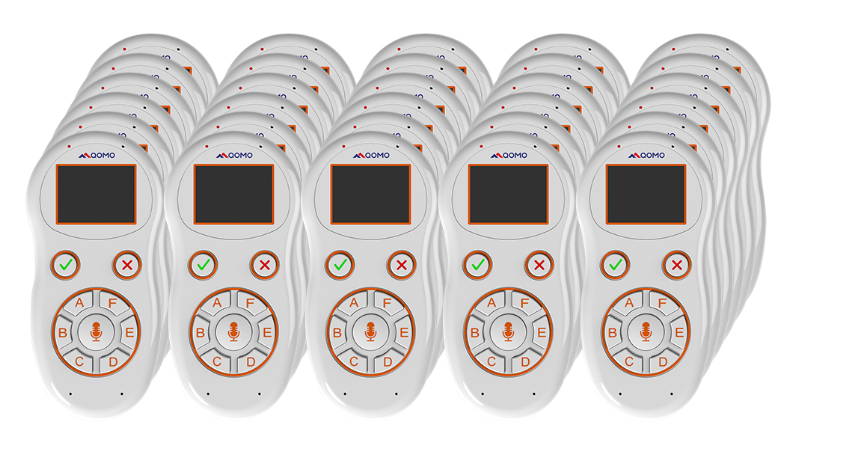Creating two-way discussions through periodic questions in lectures can improve student involvement and performance.
The goal of any lecture should be to engage the audience. If lectures are only done passively, the audience remembers the first five minutes and that’s about it.” – Frank Spors, associate professor of optometry at Western University of Health Sciences in Pomona, Calif.
The flip side, as Spors has experienced through his instruction and peer-reviewed research, is that when students are involved in active learning they not only retain material for longer periods but also get better grades.
Qomo’s student response clickers do a great help for a smart classroom. Voice voting system for example QRF997/QRF999 allows to have a language evaluation to see if you speak standard or not. We hope we can help to provide more smart classroom voting system for education.
In fact, he spent a year tracking a group of his graduate students at Western U and found that 100% were participating in his lectures. They also improved their overall marks by nearly 4%.
What was the tool that led to that success?
Spors credits audience response systems (ARS) – where students answer questions throughout discussions – for helping foster the kind of two-way engagement that every instructor hopes to achieve. Reaching even the most timid students, the use of ARS at Western and many other universities such as Auburn, Georgia, Indiana, Florida and Rutgers, have breathed new life into teaching and done so at time when communication can be challenging.
“It allows us to have a real dialogue going on in class and get real-time feedback, to see whether the material that you discuss and teach is understood,” Spors says. “The danger in an online environment is that intuitive disconnect. This closes the gap of distance education. It helps to build a sense of community between the students because they feel they are part of that discussion.”
What is an ARS?
Audience response systems help keep those who attend classes or sessions, both in virtual environments and in person, involved in instruction. Those who have attended webinars during the COVID-19 pandemic likely have participated in simple question-and-answer polls … where they otherwise might be prone to tune out or just sit on the sidelines and observe. These questions serve as a way to increase engagement, while also cleverly helping reinforce some of the material presented earlier. The ARS used in higher education have far more bells and whistles than those simple responses.
The ARS is not new. Years ago, those attending lectures would be given hand-held clickers to respond to questions posed by instructors in face-to-face environments. While keeping students somewhat engaged, their tracking capabilities and educational value, however, were rather limited.
Over the years, thanks to improvements in ARS and the emergence of technologies that placed devices in the hands of students and professors, their popularity and their usefulness have led to widespread implementation in higher education. Spors says the majority of instructors at Western University use ARS to some degree through Top Hat, which is also the platform of choice for more than 750 colleges and universities.
As opposed to a traditional lecture environment, where an instructor can dominate the dialogue for long periods, the ARS best functions when a question is posed (through a web-based environment on any device) to students every 15 minutes amid a series of slides. Spors says those questions allow all people to respond directly, not just a “single person that raises the hand in the classroom [or virtual space].”
He says two models work well: The first poses a question to the audience, which then prompts discussion after an answer is revealed. The other poses a question and gains responses that are hidden before students break into small groups for further review. The group then votes and comes up with a more well-investigated answer.
“And that is really an active engagement in the learning material, because they had to defend their position to their peers … why they actually selected a particular answer,” Spors says. “It might not only have changed their answer, but they have engaged with it.”
Post time: Jun-03-2021




